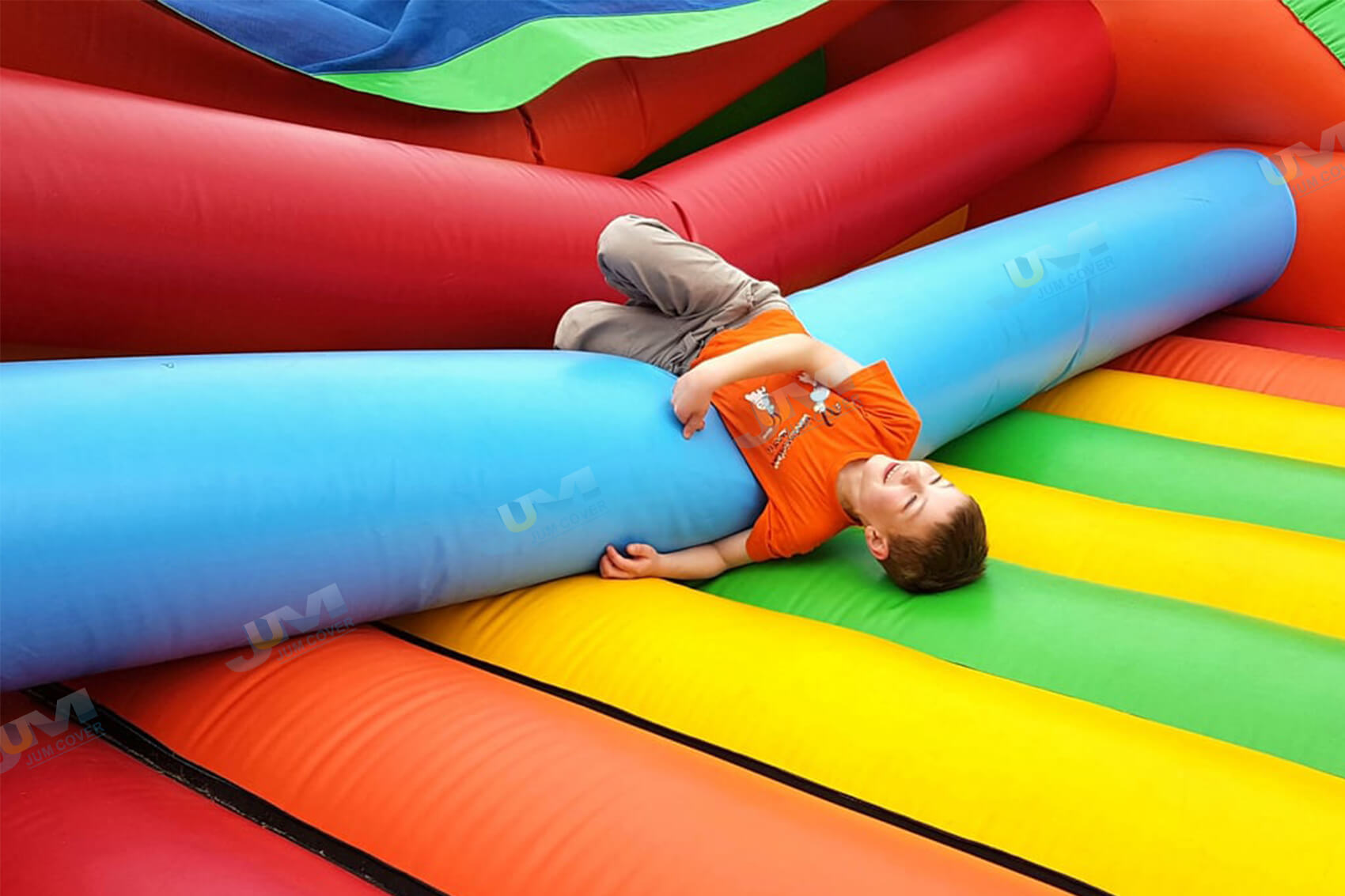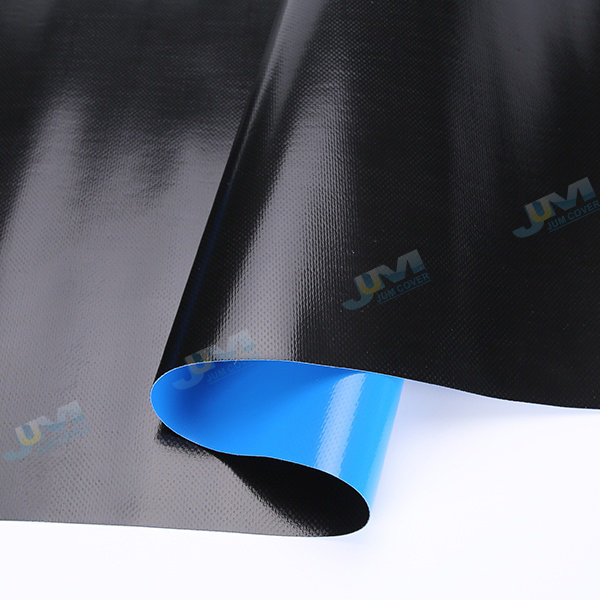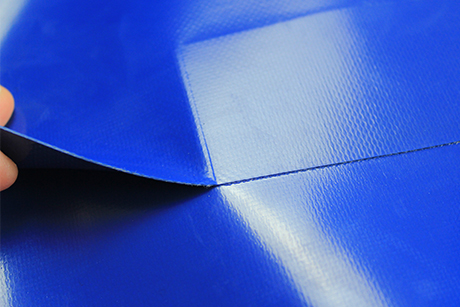Tarps News Categories
What kind of fabric is used for inflatables
Based on the analysis above, "the calendering process is the primary method used to produce fabrics for inflatable toys"(such as water floats, bounce houses, and toy balls), with coating being a secondary option under specific conditions. Lamination is generally unsuitable. Below is a detailed explanation:

"I. Core Requirements: Key Fabric Demands for Inflatable Toys"
1. Air Impermeability: Must prevent gas leakage completely; the PVC layer requires zero pinholes or micro-gaps.
2. Pressure Resistance: Withstands repeated inflation/deflation stress, demanding high tear strength.
3. Flexibility & Resilience: Adapts to folding/expansion cycles without aging-induced brittleness.
4. Safety: Direct human contact (especially children) necessitates non-toxic, eco-friendly materials with smooth surfaces.
5.Cost & Efficiency: Mass consumer products require balanced production capacity and cost control.
"II. Process Suitability Analysis"
(1) Calendering Process — Optimal Choice (>90% market share)
"Air Tightness & Strength":
Molten PVC forms a dense, pore-free film under high-temperature roller pressure, eliminating leakage risks.
Direct thermal fusion bonds PVC tightly to high-strength polyester woven fabric, achieving tear resistance >200N, far surpassing other methods.
Durability:
High-density structure resists punctures, abrasion (e.g., children’s play), and UV degradation (outdoor use).
Efficiency & Economy:
Continuous production lines reach 30m/min, ideal for bulk orders; 15% cheaper per unit than coating.
Typical Applications: Inflatable pools, water park slides, large bounce houses.
(2) Coating Process — Limited Alternative
Use Cases:
Lightweight toys (e.g., beach balls, small floats) requiring high softness via paste formulation adjustments.
Special surface treatments (e.g., antibacterial coating, matte texture).
Limitations:
Air tightness relies on coating uniformity; micro-pore control is harder than calendering, raising long-term leakage risks.
Lower strength (lightweight nylon base) limits load-bearing capacity; unsuitable for large toys.
20%–30% higher cost than calendering reduces cost-effectiveness.
Typical Applications: Low-stress toy balls, decorative inflatables.
(3) Lamination Process — Generally Unsuitable
Critical Flaws:
Adhesive layers degrade under temperature fluctuations; repeated inflation causes delamination ("blistering").
Micro-gaps at bonding interfaces increase gas permeability (3–5× higher than calendering).
Inadequate Strength:
Fabric-PVC bonding depends on glue; peel strength <50N risks edge cracking.

III. Key Decision Factors
| Criterion | Calendering | Coating | Lamination |
| Air Impermeability | ⭐⭐⭐(Excellent) | ⭐⭐ (Moderate) | ⭐⭐ (Poor) |
| Tear Strength | ⭐⭐⭐(>200N) | ⭐⭐ (80–120N) | ⭐⭐ (<50N) |
| Fold Resistance | ⭐⭐⭐⭐ | ⭐⭐⭐⭐ | ⭐⭐ (Delaminates) |
| Production Cost | ⭐⭐⭐ (Moderate) | ⭐⭐ (High) | ⭐⭐⭐ (Low) |
| Eco-Safety | ⭐⭐ (Food-grade) | ⭐⭐(Water-based) | ⭐⭐ (VOC glue) |
IV. Conclusion: Why Calendering Dominates
1. Superior Physical Performance: High-density calendering ensures "zero leakage," while robust fabric fusion resists impact deformation—meeting core functional needs.
2. Cost Efficiency: Mass production lowers unit costs; 5–8 year lifespan reduces replacement frequency.
3. Industrial Maturity: Well-established supply chains (e.g., China supplies 70% of global calendered PVC fabric) enable rapid customization (color, thickness).

Exceptions: Coating may be used for ultra-soft, low-stress items (e.g., infant inflatable pillows) but requires strict airtightness validation. Lamination is largely phased out due to reliability issues.
you may also like
- PVC knife coating fabric inflatable material-Lemon yellow
- 60% Shade Count PVC Mesh Tarp
- PVC knife coating fabric raw material for truck cover-Sky blue
- PVC knife coating fabric - U.S. Vinyl
- 8' x 8' Clear Vinyl Tarp - 20 MIL - Fire Retardant Clear Vinyl
- 10 oz Pvc Coated Fabric
- Pickup truck back over tarp PVC coated Mesh
- PVC knife coating fabric raw material for truck cover
- PVC knife coating fabric inflatable material-Light sky blue
- 24' X 18' Heavy Duty Flatbed Trailer Steel Tarp - 18 Oz. Blue Tarp
others also viewed
- How to build a canopy of PVC and tarp
- Lumber Tarps
- PVC waterproof tarpaulin scratches and waterproof treatment method
- Which GSM is good in Tarpaulin?
- How Long Does Vinyl Tarp Last?
- Heat stabilizer added for pvc coated fabric
- DIY PVC Tarp Pole
- Jumtarps In Mid-America Trucking Show 2023
- How to Build a Shelter with PVC Tarp and Rope
- Man invents COVID Clear Curtain Booth